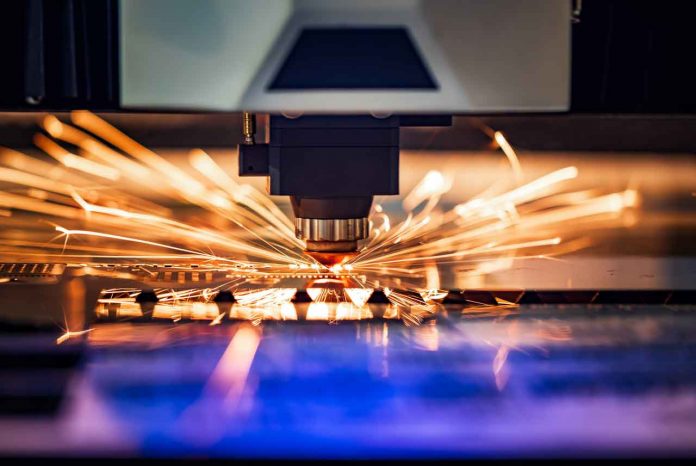The demand for high-quality glass marking has grown significantly in recent years. Traditionally, sandblasting has been the go-to method for etching designs onto glass surfaces, however laser technology is fast becoming the preferred choice as it offers unparalleled advantages over conventional methods. Let’s find out why…
One of the key advantages of laser engraving glass? Its ability to mark with unmatched precision and intricacy. Unlike sandblasting, which can be limited in detailing, laser technology allows for the creation of intricate designs and fine lines with unbeatable accuracy. This precision is especially crucial in industries where intricate branding and high-quality personalisation are a must.
Time is of the essence in any manufacturing process, and laser technology is revolutionising glass marking by significantly reducing production times. Traditional sandblasting methods involve lengthy processes, including the creation of stencils, setup, and the actual etching process. In contrast, laser technology operates seamlessly, streamlining the marking process and ultimately saving valuable time for manufacturers.
Furthermore, cost-effectiveness is a paramount consideration in manufacturing. Laser technology proves to be more cost-effective than sandblasting due to several factors. Firstly, the precision of laser marking reduces material waste, as it minimises the chances of errors associated with traditional methods. There are no consumables with laser marking, and the streamlined process translates to lower labour costs, increasing overall efficiency.
Laser technology also sets itself apart as an environmentally friendly alternative to sandblasting. Traditional methods such as sandblasting involve the use of abrasive materials and chemicals, contributing to environmental degradation. Laser marking, on the other hand, is a non-contact process that eliminates the need for additional materials, making it a cleaner and more sustainable option.
Laser technology offers unparalleled versatility in glass marking applications. From delicate logos on glassware to industrial-scale markings on architectural glass, laser technology can adapt to various requirements with ease. This versatility opens up new possibilities for designers and manufacturers, allowing for the exploration of innovative and complex designs that were once challenging with traditional methods such as sandblasting.
As the manufacturing landscape continues to embrace technological advancements, laser technology stands out as a superior alternative to traditional glass marking methods like sandblasting. Its precision, time efficiency, cost-effectiveness, environmental friendliness, and versatility make it a compelling choice for industries seeking innovative solutions. Embracing the benefits of laser technology not only enhances the quality of glass marking but also positions manufacturers at the forefront of progress in an ever-evolving market.







